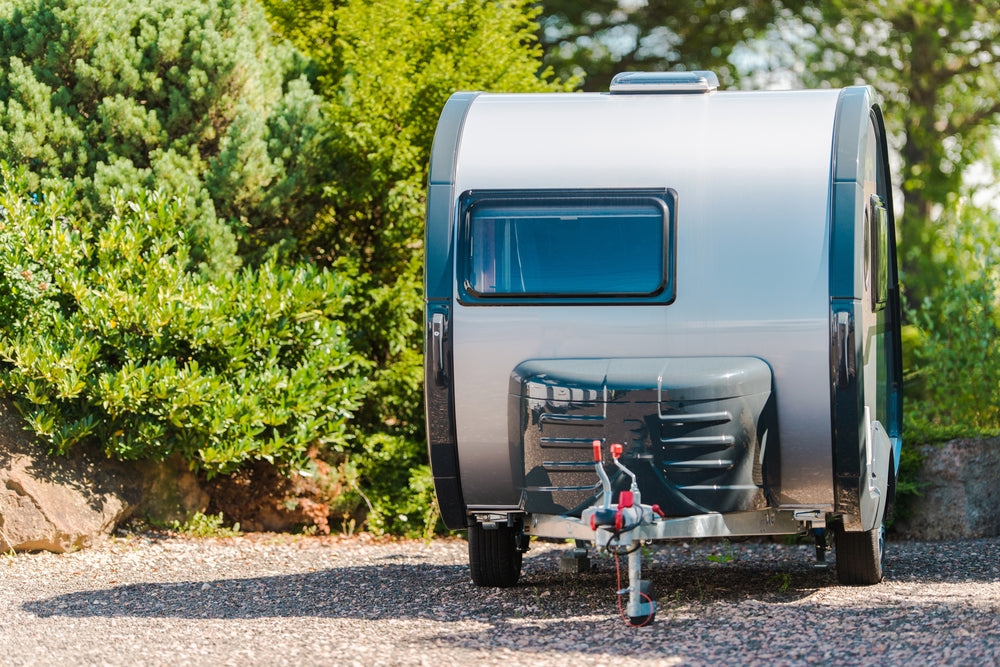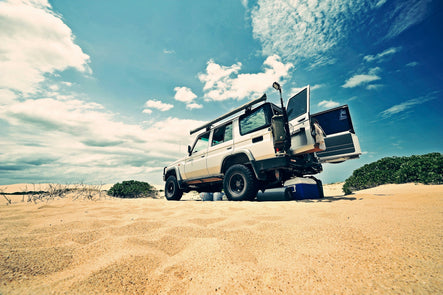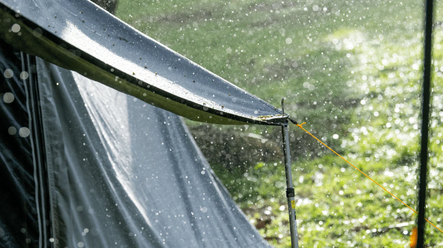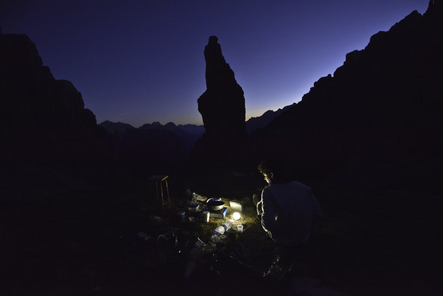There's nothing more invigorating than hitting the road (or heading off-road) with your camping trailer or caravan.
Whether you're ready for a weekend camping adventure or you're touring around Australia, you can't go wrong with the camping accessories, camping gear, off-road campers, and hybrid campers for sale available at Camping Adventures.
As your camping store in Melbourne, we're not just here to provide the best products but also the right advice.
Driving with a camper trailer is a completely different experience than towing a small, conventional trailer or driving without a tow.
Safety is the most important consideration when heading out on a camping adventure, which is why we've compiled our tips for towing with a camping trailer, caravan, or similar vehicle.
First, You Need to Understand Weight Capacity and Weight Distribution

No matter how safely you drive, your rig will always be unsafe if your camper trailer or caravan exceeds its maximum weight or is packed poorly.
Take a look at the specifications of your camper trailer and consider the following:
-
What is the Tare Weight? This is how much your trailer weighs unloaded in the manufacturer-specified condition.
-
What is the ATM Weight? This is the Aggregate Trailer Mass Weight, and it refers to the maximum safe weight of a fully loaded camper trailer. It is the combined mass of the Tare Weight and everything you pack.
-
What is the Payload? This is the maximum amount of gear you can pack into your camper trailer. If the tare weight combined with all your camping supplies is greater than the ATM weight, you have exceeded your maximum safe payload.
-
What is the Front and Rear Axle Load? This figure gives you a guide on how to distribute your weight and how much to pack at the front and rear of the trailer.
Another important part of the weight capacity puzzle is your towbar and hitch. You need to make sure you have a heavy-duty towbar with a maximum towing load that matches or exceeds the maximum fully loaded weight of your caravan or camper trailer.
Next, You Can Figure Out How to Distribute Weight in Your Camper Trailer
Just because you know the maximum safe weight of your trailer, it doesn't mean you can throw things in willy-nilly. Poor packing will jeopardise the safety of both the tow vehicle and the camper trailer, and it will contribute to things like excess fuel consumption.
When packing your camper trailer, remember to:
- Distribute trailer weight evenly - both front to back and left to right
- Having a little bit more weight at the front can reduce trailer swinging and swaying on the road
- Focus on putting the most weight over the axles of the trailer
- Keep weight low to the ground in your camper
- Fill your water tank before you hit the road to maintain a low centre of gravity
- Ensure you have the correct towing equipment and that your coupling height and ball height are even
Now You Can Take a Look at Your Towing Vehicle

You need to make sure your tow vehicle is suitable for the job before you head out on your adventure. In fact, you need to check this before you buy your travel trailer, otherwise, your fancy new trailer won't be much good to you.
For the most part, both 4WDs and standard front-wheel drive passenger vehicles can be used to tow a caravan or camper trailer. This applies to both manual and automatic vehicles.
Longer, larger, and heavier trailers may require a four-wheel drive, and if you're heading off-road, you need to make sure both your tow vehicle and your trailer are off-road compliant.
Check the towing recommendations and towing capacity of your vehicle and ensure your car is up to the job. Your tow rating and related information can usually be found in the manufacturer's handbook, and a camper trailer expert will be able to help you find the right tow for your vehicle when you're shopping around for a new trailer.
Vehicle Condition Is the Next Consideration
In order to tow safely, you need to make sure your tow vehicle, your trailer, and all the connected parts are in great condition.
Before you travel, ensure the following:
-
Service your towing vehicle, including oil, water, brake fluid, brakes, lights, indicators, transmission, drawbar, wheel bearings, etc.
-
Ensure your trailer is in prime condition, including a comprehensive service and cleaning. Be sure to check the trailer lights!
-
Check the condition of the tyres on your car and camper trailer (including spares). Check for damage, wear, and tread levels, and ensure all tyres are inflated to their maximum capacity. Also check the wheel nuts.
-
Make sure the electric brake controller is connected, calibrated, and working properly.
-
Look for any signs of cracking or rusting around your car and your trailer.
- Ensure everything is latched up, hitched up, and secure before you head off!
Now You Can Hit the Road: Here Are Our Tips for Driving with a Caravan

Be Aware of Your New Size and Weight
When you're towing a camper trailer, the length, width, weight, and height of your vehicle change dramatically, and you need to adjust to this change.
When turning corners, make sure to take the turn much wider than you otherwise would to compensate for the tighter turning arc of your trailer.
When heading under bridges or into covered spaces like petrol stations, car washes or carports, keep overhead clearance in mind. If you're not sure if you can fit underneath, ask someone to get out and have a look for you.
When reversing with a tow, use your mirrors and make slow, small movements, otherwise, you can quickly find yourself in an awkward position. A jack-knifed trailer is the last thing that you, other vehicles, and pedestrians need to deal with!
When parking your vehicle, look for double bays for some extra wriggle room and make sure the parking spot will be easy to get into and out of.
Sudden Movements Should Be Avoided
When you're driving with a hybrid camper or a caravan, it's easy to feel like you're fighting for control. All that extra weight and the sheer length of your vehicle can seem difficult to deal with at times, and your impulse might be to yank back control.
Whatever you do, don't give in to that impulse!
Suddenly jerking the steering wheel will not help you regain control of the vehicle - in fact, it will do the opposite. Aggressive braking and acceleration will also destabilise your vehicle as well as causing you to use more petrol, wear down your tyres, and put some strain on your gearbox, engine, and brakes.
Remember to take off slowly and try to accelerate and decelerate when you can rather than braking. Look a little bit further ahead on the road so you can anticipate oncoming corners, turns, and traffic and react appropriately.
Other Vehicles Should Be a Distant Memory
When driving with a camper trailer, keeping up with other vehicles should not be your priority. You will be larger and heavier than most other cars on the road, so you need to make sure you're not travelling too close to the car in front of you (even if the car behind you is right up your rear!)
The average vehicle takes about 80m to come to a stop when travelling at a speed of 100km/h. It will take you at least double the time to come to a complete stop when towing, and you want to avoid braking suddenly and compromising your stability.
To be safe, you should maintain at least double the gap between you and the vehicle in front of you when you're towing. As a rule, a 5-second gap is what you should be aiming for.
To Overtake or Not to Overtake?
There are a number of things to consider if you plan to overtake another vehicle while towing:
-
Your acceleration power is much less than it would be without a heavy trailer attached to your vehicle. Make sure you have the time and space to safely overtake before you reach a corner.
-
Your vehicle is also much longer than it used to be, so make sure you have left plenty of space before pulling back into the left lane. You don't want to hit the other vehicle on the way back in.
-
When overtaking, you could be exposed to greater wind conditions which could affect the stability of your vehicle. Make sure you're not driving too close to the other vehicle when overtaking, accounting for some vehicle sway.
-
Is there a line of vehicles behind you also looking to overtake? Let smaller vehicles go first to avoid an angry line of drivers!
-
Whenever possible, wait for a dedicated lane to open up before overtaking or avoid overtaking altogether.
If other vehicles are trying to overtake you, it's a good idea to slow down by decelerating rather than braking. If it's safe to do so, you can also move to the leftmost side of your lane to give the overtaking vehicle plenty of room to get past you.
Tips for Tackling Hills
Going up and down steep hills is hard enough when you're not towing a trailer, but there are extra considerations when you are towing. This is especially the case if you have a larger trailer that's weighing you down, but it also applies to light trailers.
When heading uphill, try and increase your speed gradually before you reach the incline (if it's safe to do so). This will give you a bit of power and momentum when heading up the slope. Using low gears on the hill itself can also help you get to the top without trouble.
When heading downhill, taking it slow is the best way to go! Once again, using low gears is the way to go as it will help you drive slowly and steadily. You never want to brake suddenly when towing, but this is especially important when travelling downhill as sharp braking can quickly compromise trailer stability.
Have a Break
It's always a good idea to take a quick break when you're on a road trip, and this applies doubly when you're towing a camper trailer.
Pulling over gives you and your passengers the opportunity to have something to eat and drink, stretch your legs, and have a quick rest. You can also take the chance to swap drivers if you've got multiple people who are confident driving with a tow and covered by the insurance.
Having a break also allows you to check the towbar and hitch, make sure nothing is loose inside or outside your trailer, and double-check the tyre pressure and condition of your tyres. If your mirrors have been nudged out of place, pulling over is also the perfect opportunity to correct your mirror position before you hit the road again.
Controlling the Swing and Sway of Your Trailer
When your camper trailer or caravan is fishtailing, snaking, or swinging from side to side, this is commonly known as sway.
Sway can occur or be exacerbated for a number of reasons, including incorrect hitch height or ball weight, poor weight distribution in your camper trailer, general wind conditions, and the wind created by a passing truck.
The best ways to manually control trailer sway include slowing down your vehicle without braking excessively, maintaining a straight steering wheel wherever possible, and activating the brakes only in the camper trailer.
Trailer Sway Control equipment may also be available for your vehicle, either as an add-on or as an inbuilt feature in newer vehicles. Sway control equipment is designed to automatically increase stability and reduce swing or sway when you're towing a trailer.
However, even the best sway control equipment will not replace towing fundamentals. First and foremost, you should focus on weight capacity, weight distribution, and careful driving to prevent excessive sway.
Consider a Wind Deflector for Your Car
Wind deflectors are mounted on the roof of your tow vehicle, and if you choose the right type of wind deflector, it can have a range of benefits.
Wind deflectors can increase towing stability, reduce petrol consumption, improve wind resistance, and relieve some strain on your car engine. Increased wind resistance can be especially beneficial to reduce the buffeting effect from large passing vehicles.
When choosing a wind deflector, make sure the size, shape, and angle allow the wind to travel over the top of your trailer when it's deflected off the car. Look for a curved deflector that's larger at the front and mount it securely towards the rear of your car's roof at an angle of 45 degrees or greater. Also ensure the wind deflector is designed to fit your vehicle.
If lots of bugs are splattered on the front of your trailer at the end of the trip, the deflector probably isn't pushing wind past your trailer, meaning it's not doing its job effectively.
Do You Need a Braking System?
If you have a hybrid camper, caravan, or camper trailer that weighs more than 750kg, you are required to fit a special braking system.
For older trailers and trailers that weigh less than 2000kg, your vehicle may be fitted with mechanical or hydraulic override brakes.
Newer and heavier trailers typically feature electric brake controllers. These controllers let you activate your electric trailer brakes independently of your vehicle brakes and sometimes come with extra functionality to control stability.
Get More Advice When You Buy Your New Trailer

If you're in the market for a new camper trailer or camper trailer accessories, have a chat with the team at Camping Adventures! We're your home of camper trailers in Melbourne, as well as a great range of travel trailers and camping gear in Hobart.
We're happy to give you our expert advice on towing a trailer when you come down and visit our Melbourne showroom. You can find the best camper trailers, camping and 4WD gear, and accessories for travel trailers at our Carrum Downs location!
Check out our great range of Patriot Camper Trailers for sale and Hybrid Lifestyle Camper Trailers.







